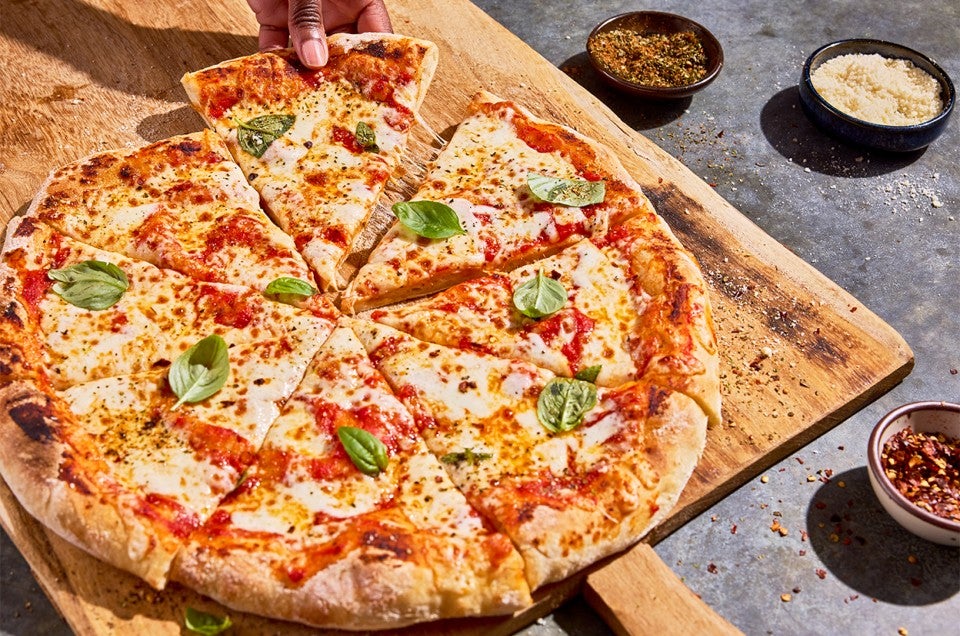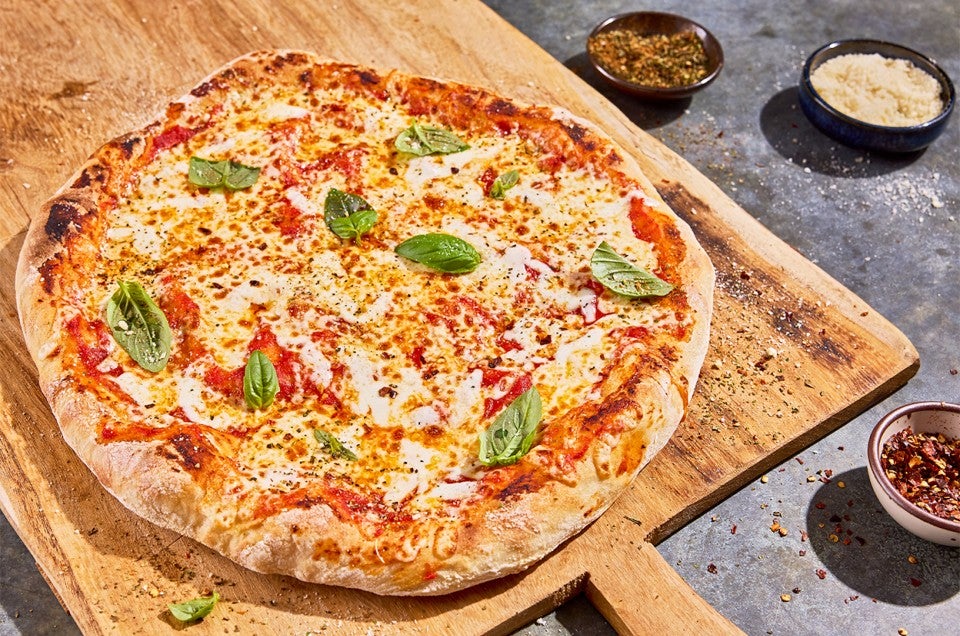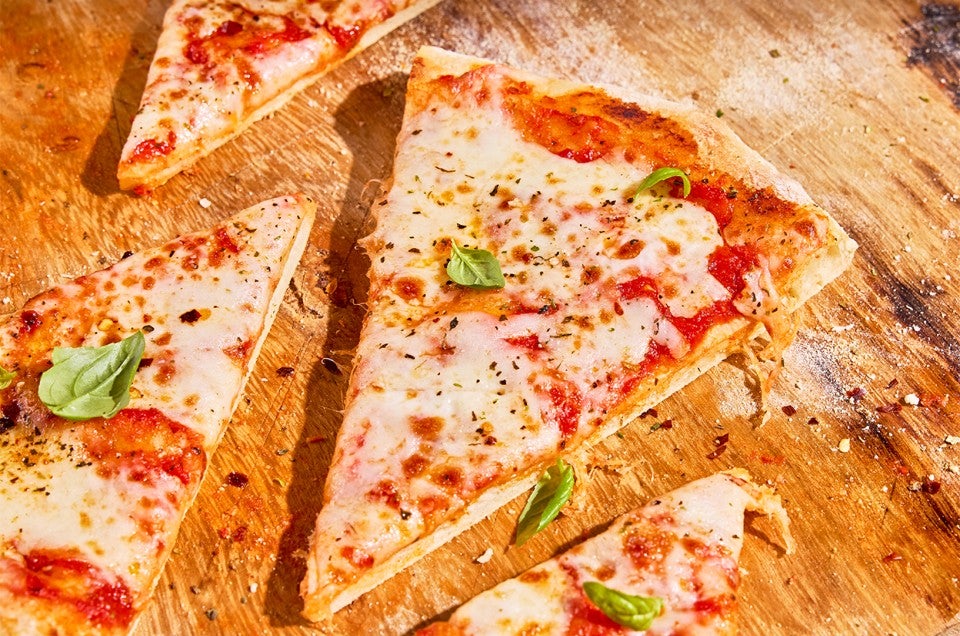No-Knead Pizza Crust
While a typical pizza crust recipe yields crust that's either thin-crisp or soft-chewy, this one offers the best of both worlds. This pizza crust is thin in some spots and thicker in others, with crackly-hard edges and lots of chew. To ensure the dough is cooked through, with no sogginess in sight, it's baked most of the way before the toppings are added. Our thanks to Jim Lahey, of New York City's Sullivan St. Bakery, for the inspiration for this version of no-knead pizza crust recipe.





















